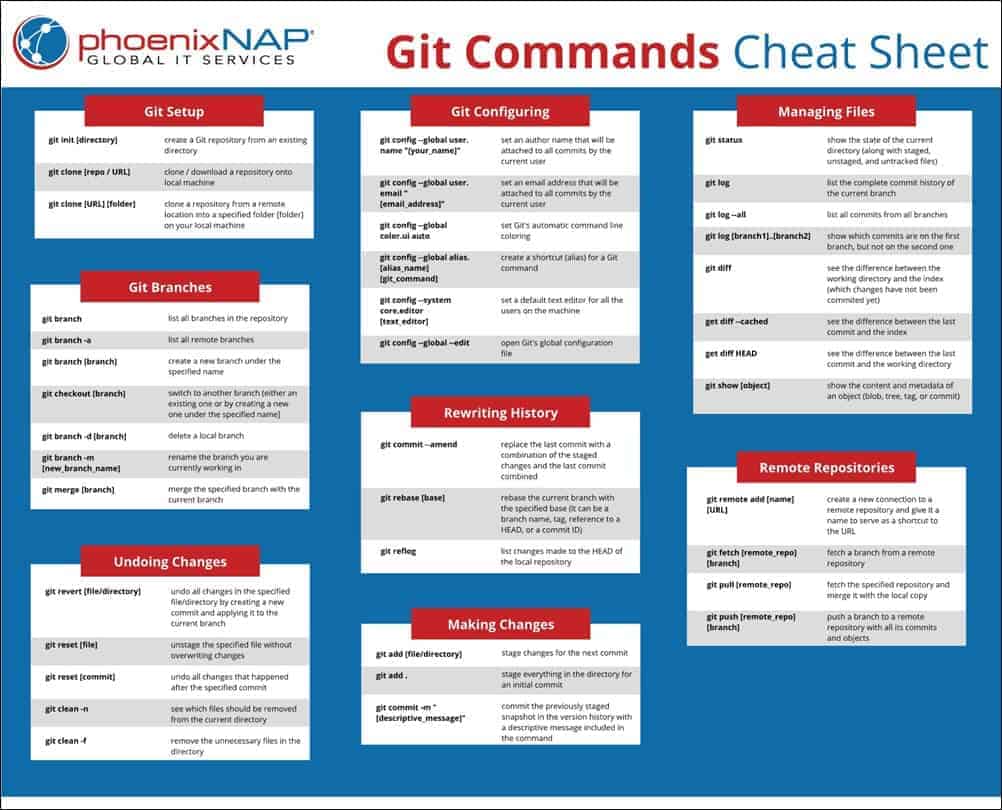
So how do we create our branches? Well that bit is easy! Simply use the branch command passing in the name you’d like to call it, as follows: $ git branch feature/unzip
Github git cheat sheet pdf code#
This is an important best practice in my opinion as keeping your new feature code separate from other changes in your master allows you to easily switch back and forth between branches without cross-polluting your code. If we were to create a new feature for example, we should consider creating a new branch for all of our feature code. Remote: Total 94 (delta 0), reused 0 (delta 0), pack-reused 94 Initialized empty Git repository in /Users/sjmaple/myProject/.git/ Once this is done, we’re able to start our workflow! Here are the two examples in action on the ZipRebel project: $ git init myProject

The difference being that you would use the init command to create a repository from scratch, whereas you’d use clone to literally clone, or copy an existing repository into the directory you ran the command from. Both of which give you a repository in which you can manage your source code. Well, we’ll start at the beginning of course! In the beginning, Git created init and clone. At the end of the article, you can download a one-page Git workflow cheat sheet rich with the Git commands of champions, the gems that make your SCM a pleasure to work with, the…ok, enough’s enough, let’s get down to business. Today, we'll walk through some Git basics, including Git commands like pull, push, and fetch.

With every great tool, there is a CLI which compliments all the great features and options, which leads to a vast number of things you need to remember and be expected to recall within a keystrokes notice.

In this post, we’re looking at one of the most successful source code management tools available today, Git.


 0 kommentar(er)
0 kommentar(er)
